My London Experience
Introduction
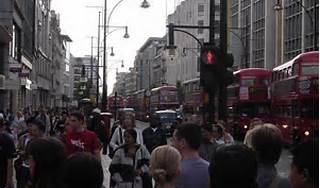 I left for London, England, in September of 2013 to meet up with friends and colleagues as we continued on our journey to attain more insight about leadership and global perspectives. This was my second trip to London, allowing me to get reacquainted with the great city.We studied, learned, visited iconic sites, ate great food, and learned a great deal about London’s day-to-day operations. I venture to say that our time was well spent and I would do it again tomorrow. Here are some of my greatest and most intriguing moments as well as people that I encountered during my time there.
I left for London, England, in September of 2013 to meet up with friends and colleagues as we continued on our journey to attain more insight about leadership and global perspectives. This was my second trip to London, allowing me to get reacquainted with the great city.We studied, learned, visited iconic sites, ate great food, and learned a great deal about London’s day-to-day operations. I venture to say that our time was well spent and I would do it again tomorrow. Here are some of my greatest and most intriguing moments as well as people that I encountered during my time there.
The People I Met
Our group was privileged to meet several respectable leaders while in London. They modeled characteristics of Jim Collins’ definition of level five leaders[1] at the top of their game, which he describes in his book Good to Great. These are individuals who pay attention to trends, hire the right people, and know the history and pathology of an organization from the top down. Not only are such leaders good at analyzing data and forecasting for future growth, they know how to influence others, especially their team. Level five leaders are not insecure. Their trust their leadership and understand that to a great degree, everything rises and falls on leadership.[2]
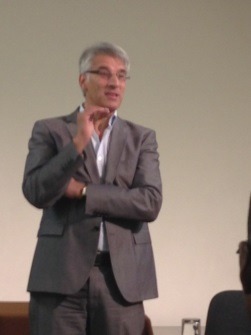 One particular leader that stood out to me is Steve Chalke. Steve is the founder of the Oasis Learning Center, an organization dedicated to helping youth and families with education, spirituality, socio-economic betterment, and a better quality of life overall. The development of this organization challenged me to be open to the out-of-the-box ideas and technology in society[3] to serve others in the spirit of Christ. His passion for his craft is exhilarating. Nearing the age of sixty, he has built a team of people that believe in their work and service for others. As a level five leader, one primary note that I took away from Steve’s talk, in addition to his vast leadership perspectives, is to be sure to take care of your family in the process of serving others. Basically, I heard him encourage us to be good at what you do and be a good family man too.
One particular leader that stood out to me is Steve Chalke. Steve is the founder of the Oasis Learning Center, an organization dedicated to helping youth and families with education, spirituality, socio-economic betterment, and a better quality of life overall. The development of this organization challenged me to be open to the out-of-the-box ideas and technology in society[3] to serve others in the spirit of Christ. His passion for his craft is exhilarating. Nearing the age of sixty, he has built a team of people that believe in their work and service for others. As a level five leader, one primary note that I took away from Steve’s talk, in addition to his vast leadership perspectives, is to be sure to take care of your family in the process of serving others. Basically, I heard him encourage us to be good at what you do and be a good family man too.
 A second gentleman that stood out to me was an executive from one of the three credit bureaus, Shawn Holtzclaw. He shared with the cohort about the importance of not only having a good business but how to approach businesses and business people. One of the first concepts he mentioned was not to waste their time talking about one’s passion. Instead, show them a business plan and how they can partner up with you and your organization. Every major organization has specific amounts of funds set aside ready to team up with community organizations. It is the responsibility of the community leaders, which can include pastors, to demonstrate how the funds will be used and to paint the vision for how the role of business being asked for a donation.
A second gentleman that stood out to me was an executive from one of the three credit bureaus, Shawn Holtzclaw. He shared with the cohort about the importance of not only having a good business but how to approach businesses and business people. One of the first concepts he mentioned was not to waste their time talking about one’s passion. Instead, show them a business plan and how they can partner up with you and your organization. Every major organization has specific amounts of funds set aside ready to team up with community organizations. It is the responsibility of the community leaders, which can include pastors, to demonstrate how the funds will be used and to paint the vision for how the role of business being asked for a donation.
 We also met with Shawn at a very nice Indian restaurant where I ate some of the best curry and Tandoori chicken known to man.He continued to share with our group about the importance of treating people like people as opposed to numbers. Regardless if your company or organization is all out the numbers, you can give people a glimpse of who you are as Christ follower. Allow your life, actions, and behavior to create a different atmosphere and mirror the good[4] that human beings can offer as believers.
We also met with Shawn at a very nice Indian restaurant where I ate some of the best curry and Tandoori chicken known to man.He continued to share with our group about the importance of treating people like people as opposed to numbers. Regardless if your company or organization is all out the numbers, you can give people a glimpse of who you are as Christ follower. Allow your life, actions, and behavior to create a different atmosphere and mirror the good[4] that human beings can offer as believers.
 The third person that really stood out to me, and possibly my favorite, was MaryKate Morse. I gained a great deal of insight from her talk. First, she explained how God’s vision and calling on our lives can be frustrating. [5] I had never put the two words vision and frustration together, but it makes sense. Secondly, she opened my eyes to a concept that often goes unnoted when dialoguing with others. That is being intentional with body language. In most instances, body language goes unnoticed or unchecked when we are deeply involved in our conversations. Yet, body language can speak louder than our words.[6] Not only are words calculated, body language is too. She proceeded to tell a story about a run-in with a colleague and how he treated her after she shared some unknown information. They both were slated to speak a conference. He was unaware that she was a keynote presenter on the same day and timeframe as he. Upon sharing her excitement about the upcoming experience, he immediately used angry body language towards her. He took his index finger and began dotting her shoulder, saying, “You just remember that I am the lead speaker.”
The third person that really stood out to me, and possibly my favorite, was MaryKate Morse. I gained a great deal of insight from her talk. First, she explained how God’s vision and calling on our lives can be frustrating. [5] I had never put the two words vision and frustration together, but it makes sense. Secondly, she opened my eyes to a concept that often goes unnoted when dialoguing with others. That is being intentional with body language. In most instances, body language goes unnoticed or unchecked when we are deeply involved in our conversations. Yet, body language can speak louder than our words.[6] Not only are words calculated, body language is too. She proceeded to tell a story about a run-in with a colleague and how he treated her after she shared some unknown information. They both were slated to speak a conference. He was unaware that she was a keynote presenter on the same day and timeframe as he. Upon sharing her excitement about the upcoming experience, he immediately used angry body language towards her. He took his index finger and began dotting her shoulder, saying, “You just remember that I am the lead speaker.”
Even if he was kidding, which I doubt he was, he put her in a position of inferiority. I believe that it is a leader’s responsibility to lift others up and not to tear them down or to treat them as some type of subservient human being. Language matters. And body language just may speak louder than words.
Keep Calm and Carry On
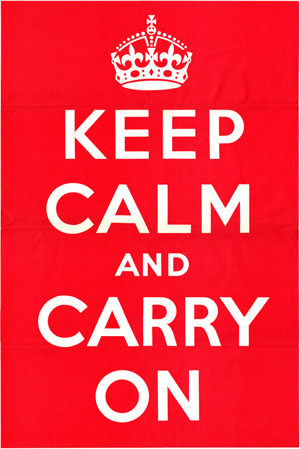 I noticed that people in general, though they were focused, were not necessarily in a hurry to get their various destinations. The same is true for the grocery store clerks. They were very polite and took their time as they rang up groceries and collected funds. Then, I saw it. As I was shopping for souvenirs, this sign caught my eye and I quickly snapped a picture of it. It was the perfect wording and description for what I experiencing as I traveled amongst the people and learned the story behind my new favorite saying when enduring tense moments.
I noticed that people in general, though they were focused, were not necessarily in a hurry to get their various destinations. The same is true for the grocery store clerks. They were very polite and took their time as they rang up groceries and collected funds. Then, I saw it. As I was shopping for souvenirs, this sign caught my eye and I quickly snapped a picture of it. It was the perfect wording and description for what I experiencing as I traveled amongst the people and learned the story behind my new favorite saying when enduring tense moments.
This particular phrase was used by the British government. Before the Second World War, the possibility of multiple air attacks on major British cities was thought to soon be a frightening reality. Members of the government distributed a limited amount of this phrase to its people without public display on taxies, billboards, businesses or buses. Eventually, it made way across the country to raise the moral of the people and kept the momentum moving forward with day-to-day operations.[7]
The phrase, Keep Calm and Carry On, now hangs in my office and is posted on my kitchen counter. It is a great reminder for me to keep patient with others, situations, and myself, and to carry on with life one day at a time. It encourages me to reign in is my temperament. Because I am driven and want to take care of business, I can be a bit unvarnished at times in conversation with others. This can come forth especially when it is provoked. It is not that I am a mad person or cannot get along with others. I simply need to be twice as patient as I would like others to be with me.
The Places to See
 My first memorable site is Big Ben. Time stands still for no man. This is the message that came to me after peering across the street at the clock tower (Big Ben). Recently, it was renamed the Elizabeth Tower in celebration of the Diamond Jubilee of Elizabeth II.[8] Sitting tall at the north end of Westminster, the bell and clock are personal reminders that as a leader, I only have a certain window of time to make an impact on others with the Gospel of Jesus Christ. Whether I am teaching in a university, pastoring a church, or working as an executive at some organization, I want to use my time wisely and serve my constituents and my family the very best I can.
My first memorable site is Big Ben. Time stands still for no man. This is the message that came to me after peering across the street at the clock tower (Big Ben). Recently, it was renamed the Elizabeth Tower in celebration of the Diamond Jubilee of Elizabeth II.[8] Sitting tall at the north end of Westminster, the bell and clock are personal reminders that as a leader, I only have a certain window of time to make an impact on others with the Gospel of Jesus Christ. Whether I am teaching in a university, pastoring a church, or working as an executive at some organization, I want to use my time wisely and serve my constituents and my family the very best I can.
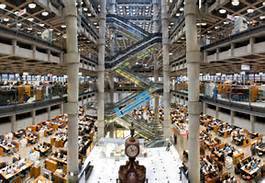 The second landmark that we visited early on during our stay in London was Lloyd’s of London. It is basically a major insurance market. Although there are many subsidiaries that Lloyds has influence over, it primarily oversees stealthy money transactions in being one of England’s major market players in the financial district. It sits in the money district of London and stands out like a building made for the future. In fact, that is one of the major points that I picked up on from the conversations that tour guide presented. As one of the giant financial institutions in England, Lloyds is a very forward thinking organization. Numbers matter. Trends matter. Ultimately, their day-to-day decision making is based on the current market, yet forecasting still plays a critical role in their financial resolve. One of the key points that I took away from our tour guide is that the numbers matter for every business. And in the case for my colleagues and me, we should be good stewards of the church’s resources.
The second landmark that we visited early on during our stay in London was Lloyd’s of London. It is basically a major insurance market. Although there are many subsidiaries that Lloyds has influence over, it primarily oversees stealthy money transactions in being one of England’s major market players in the financial district. It sits in the money district of London and stands out like a building made for the future. In fact, that is one of the major points that I picked up on from the conversations that tour guide presented. As one of the giant financial institutions in England, Lloyds is a very forward thinking organization. Numbers matter. Trends matter. Ultimately, their day-to-day decision making is based on the current market, yet forecasting still plays a critical role in their financial resolve. One of the key points that I took away from our tour guide is that the numbers matter for every business. And in the case for my colleagues and me, we should be good stewards of the church’s resources.
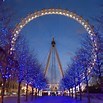 The third site that was really breathtaking was the London Eye. Not to from far from Westminster, the London Eye is the largest Ferris wheel in England. It also allows visitors a view from the highest point in the city of London. It attracts millions of visitors each year and is a family-friendly ride. One of the remarkable aspects about the Eye is that it only stops for maintenance. Riders may get on and off as it continues to spin. Upon viewing the Eye twice before heading back to the United States, a leadership comparison crossed my mind. The Eye is very similar to a big wheel. Just like a wheel, at the center of every leader is the core of what they represent. The core is that nuclei location where the multiple spokes are connected to give strength. And as leaders we have various responsibilities demanding our time and energy. We must keep close to Jesus who gives us strength to keep everything going including ourselves. We too can reach our highest potential but it must be done with help of Christ and others.
The third site that was really breathtaking was the London Eye. Not to from far from Westminster, the London Eye is the largest Ferris wheel in England. It also allows visitors a view from the highest point in the city of London. It attracts millions of visitors each year and is a family-friendly ride. One of the remarkable aspects about the Eye is that it only stops for maintenance. Riders may get on and off as it continues to spin. Upon viewing the Eye twice before heading back to the United States, a leadership comparison crossed my mind. The Eye is very similar to a big wheel. Just like a wheel, at the center of every leader is the core of what they represent. The core is that nuclei location where the multiple spokes are connected to give strength. And as leaders we have various responsibilities demanding our time and energy. We must keep close to Jesus who gives us strength to keep everything going including ourselves. We too can reach our highest potential but it must be done with help of Christ and others.
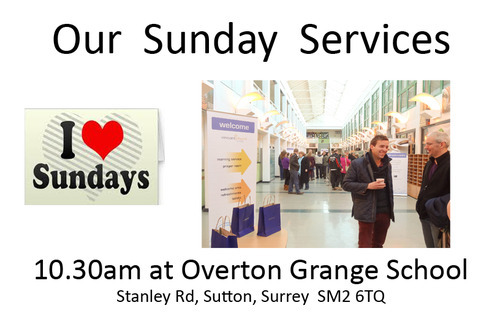 One final destination to mention is a church that began as a startup work, also known as the Vineyard Church in Sutton. It meets in a local elementary school and has a very casual environment that exudes a strong hospitable vibe. I can identify with this setting as my family is also part of a church plant that meets in a middle school auditorium. Though the Vineyard Church is made up of several hundred today, it still feels like a close-knit family. They have a strong desire to reach children, with the various children’s ministries being named after candies. The church has one particular art room that displays various portraits painted by the students about God and humanity, identifying various issues our society deals with today. Such realities, mindsets that effect the population at large, are catalysts for moving onlookers to pray for God’s intervention and grace. Such art leaves an indelible image in the mind and hopefully a lasting prompting to plead with God on behalf of our lost world and to share his love with them.
One final destination to mention is a church that began as a startup work, also known as the Vineyard Church in Sutton. It meets in a local elementary school and has a very casual environment that exudes a strong hospitable vibe. I can identify with this setting as my family is also part of a church plant that meets in a middle school auditorium. Though the Vineyard Church is made up of several hundred today, it still feels like a close-knit family. They have a strong desire to reach children, with the various children’s ministries being named after candies. The church has one particular art room that displays various portraits painted by the students about God and humanity, identifying various issues our society deals with today. Such realities, mindsets that effect the population at large, are catalysts for moving onlookers to pray for God’s intervention and grace. Such art leaves an indelible image in the mind and hopefully a lasting prompting to plead with God on behalf of our lost world and to share his love with them.
Conclusion
My experience in London is one that I will not soon forget. Overall, there were so many wonderful sights, sounds, and tastes to experience that I could not fit them all here. England is filled with history and her future seems very bright. Soon and very soon I hope to return to England with my family.
[1]. Collins, James C. Good to Great: Why Some Companies Make the Leap—and Others Don’t. New York, NY: HarperBusiness, 2001.
[2]. Maxwell, John C. The 21 Irrefutable Laws of Leadership: Follow Them and People Will Follow You. Nashville, Tenn: Thomas Nelson Publishers, 1998.
[3]. Charlene Li, Open Leadership: how Social Technology Can Transform the Way You Lead. San Francisco, CA :Jossey-Bass, 2102, p.68.
[4]. Kets de Vries, Manfred F. R. The Leadership Mystique: Leading Behavior in the Human Enterprise. Harlow, England: Prentice Hall/Financial Times, 2006.
[5]. Edwin H. Friedman, A Failure of Nerve: Leadership in the Age of the Quick Fix Church Publishing Inc.. Kindle Edition, Locations 324-342.
[6]. MaryKate Morse. Presentation: Body Language and Leadership. London, England. 10-1-2013.
Leave a Reply
You must be logged in to post a comment.